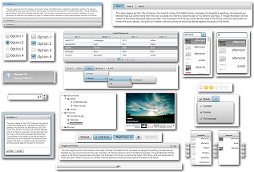


A filter input will be added to dynamically filter all options. Set to true or false to enable or disable the filter. If set to true, the filter is case-insensitive. Moves the drop-down-area from the left hand side to the right hand side.ĮnableCaseInsensitiveFiltering (alternative writing) Legal values: block, inline, inline-block. If you use the "visible" attribute, the value of this attribute is added. If true, the button is disabled if no options are given.ĭisables the input element, default is false. Left-to-right text direction), rtl (Right-to-left text direction) and auto (let the browser figure out the direction of your alphabet, based on the page content). Alternative legal values: half, one-third, two-thirds, one-fourth, three-fourths.ĭirection indication for text that does not inherit directionality. The number may optionally be followed by "column" or "columns". Integer value to specify how many columns to span on tiny screens (≤ 767 pixels wide). Alternative legal values: half, one-third, two-thirds, one-fourth, three-fourths. Integer value to specify how many columns to span on small screens (≥768p pixels wide). Integer value to specify how many columns to span on medium screens (≥992 pixels wide). Integer value to specify how many columns to span on large screens (≥1200 pixels wide). The width of the multiselect button may be fixed using this option.

Note that the original definition of the widget doesn't use the style definition. HTML snippet of the container holding both the button as well as the dropdown. Setting this flag updates the widget on every AJAX request.Īn EL expression referring to a server side UIComponent instance in a backing bean. Text which is displayed if every option has been selected.Īlternate textual description of the input element. Whether the Button submits the form with AJAX. Multiple Choice Combobox (SelectMultiMenu)Īccess key to transfer focus to the input element.Input Text with autocompletion and tags.Sidebars (NavLinks and NavCommandLinks).HTML5-friendly markup: Using DIV tags in JSF.Lastly, the "automatic AJAX" server-side DOM diff in ICEfaces can create performance issues server-side if your pages get big - most of the time you know what you want to refresh, and explicitly specifying update="id" on a component is more effective.
#Primefacs icefaces usage code
In PrimeFaces, thanks to "widgetVar", you can bind the component to a client-side variable accessible in jQuery and regular DHTML events.įurther, the PrimeFaces components handle many of the common cases with less code for example, a dialog component includes the title bar and the "X" to close, while in ICEfaces you have to roll your own for that (or buy the EE with composite components). In ICEfaces, you need a server-side round trip and a managed bean property + action listener to open a dialog. I've used both ICEfaces and PrimeFaces and prefer PrimeFaces for two main reasons: development efficiency and UI performance/responsiveness.


 0 kommentar(er)
0 kommentar(er)
